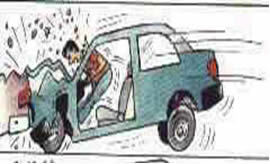All moving vehicles develop a certain speed, which is measured by the speedometer located on the dashboard of all motor vehicles. On a journey, vehicles can develop various speeds, depending on the quality of the road, the number of cars, obstacles encountered, among other situations. In this way, in a journey, we can calculate the average speed developed on the route.
To calculate the average speed, we need to know the distance between cities and travel time. For example, let's say that a car driven by one person took 3 hours to travel 240 kilometers. The average speed will be determined by dividing the distance and the time spent on the trip. Look:

On that trip, the car developed an average speed of 80 km/h. By using the calculation of the average speed, in these situations, we are verifying that this car traveled 80 kilometers every 1 hour of travel.
When the car is moving and we look at the speedometer, what we see is the instantaneous speed of the vehicle, it is different from the average speed. Race cars can reach instant speeds equal to 200 km/h, 220 km/h, among others, unlike passenger cars that must respect the speed limits according to the Traffic Code Brazilian.

Most accidents occur due to
drivers' recklessness
Anyone who breaks speed limits is subject to fines and may even lose the right to drive. These laws exist to control high speeds in cities and highways, preventing serious accidents with drivers, passengers and pedestrians.
by Mark Noah
Mathematical


